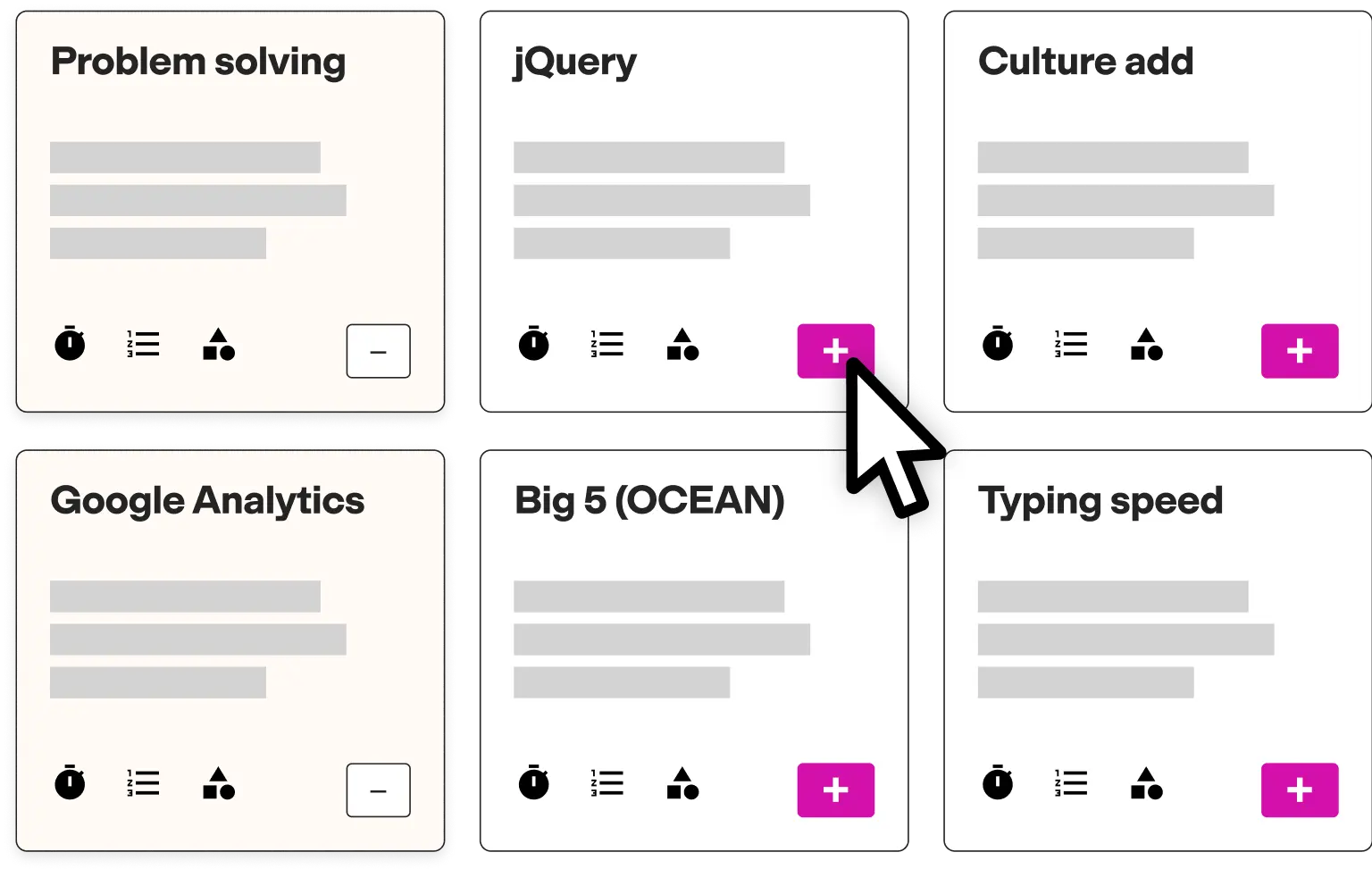Skills tests to hire the best
Talent assessments that replace resumes with results.
Join 10,000+ companies who hire with TestGorilla
Let their skills do the talking
A resume only tells you what a candidate wants you to hear. Our talent assessment goes deeper, evaluating skills, behavior, and culture add to make hiring less gut feeling. More great feeling.
Hiring down to a science
Across 400+ tests, developed by 15 specialists with 12 PhDs between them, you can screen talent on exactly what matters. Making smarter, faster, more accurate decisions, the first time of asking.
Programming
Level up your tech team recruitment with coding tests in 20+ languages, helping you identify top developer talent with ease.
Cognitive ability
Uncover problem solving and critical thinking skills with tests to assess verbal and numerical understanding.
Personality and culture
Gauge personality traits to match individuals to cultures where they'll thrive, ensuring team compatibility and job satisfaction.
Languages
Evaluate language proficiency for roles requiring linguistics skills and to ensure effective communication across global teams.
Role specific
Tailor assessments to specific job roles, helping you spot candidates with the necessary skills and knowledge to excel in their positions.
Situational judgment
Test decision making and problem solving in real-world scenarios, predicting how candidates handle workplace challenges.
Software skills
Measure proficiency in essential software, from productivity tools to specialized applications, so you can pick job-ready candidates.
Typing speed
Assess typing accuracy and speed, crucial for roles requiring fast and efficient data entry or content creation.
See what happens when you put skills first
Our latest report on the state of skills-based hiring found that...
of companies reduced their mis-hires
Candidates tested through our platform
Reduction in time-to-hire by using our platform
of companies reduced their mis-hires
Candidates tested through our platform
Reduction in time-to-hire by using our platform
“The ability to customize TestGorilla according to our needs, has made our hiring process much faster for candidates. The data also shows that a quicker application process leads to a higher number applications and a better completion rate. As a result we're seeing increased hiring speed with clear improvements in the quality of hire.”















